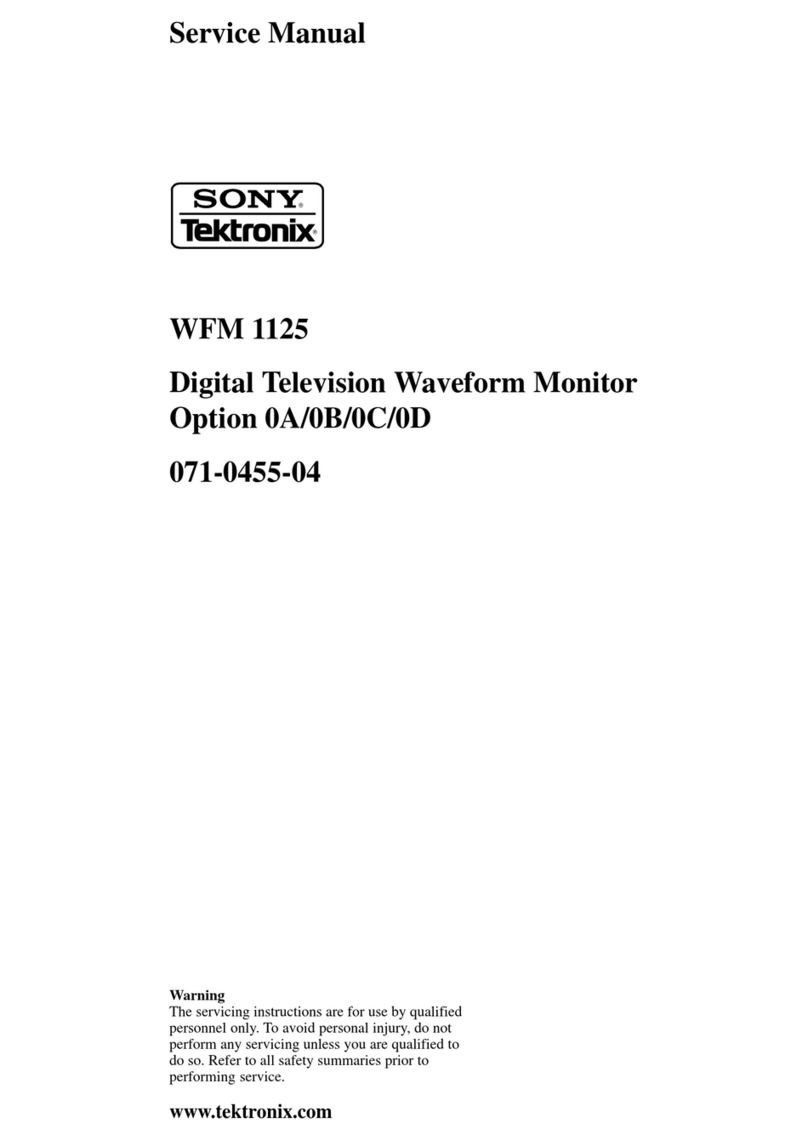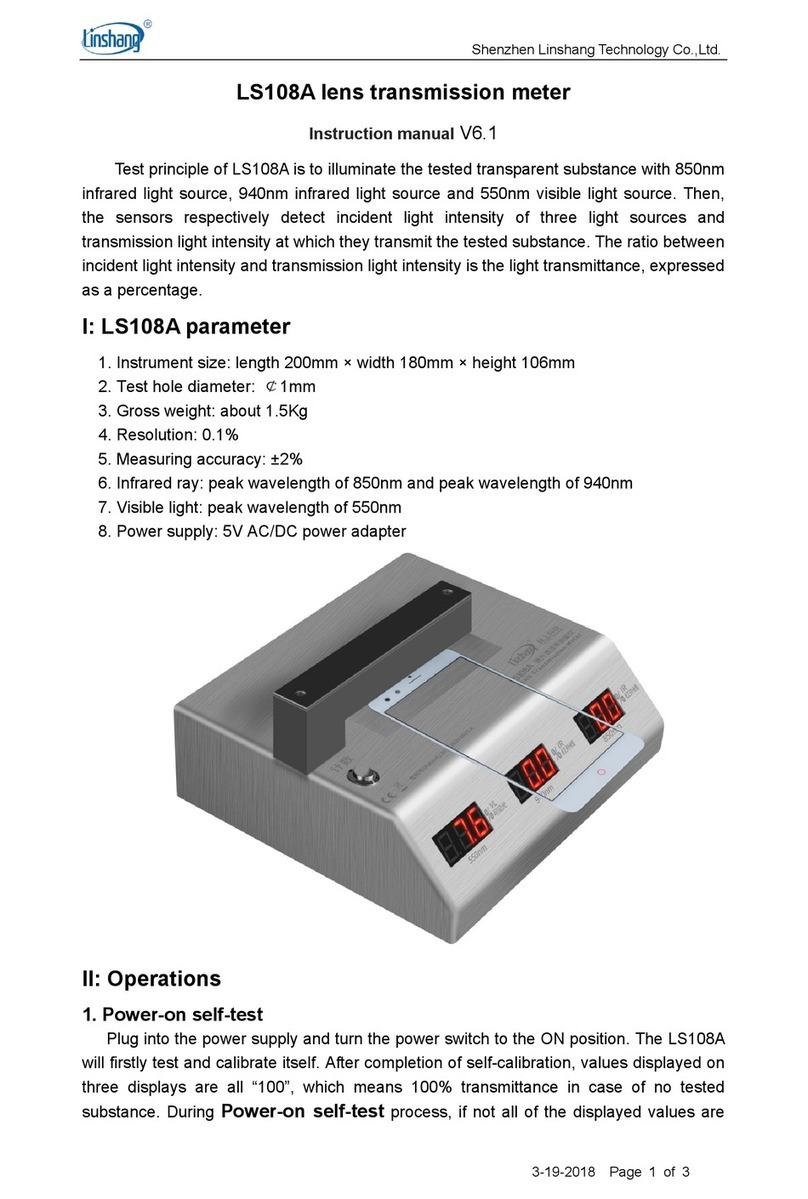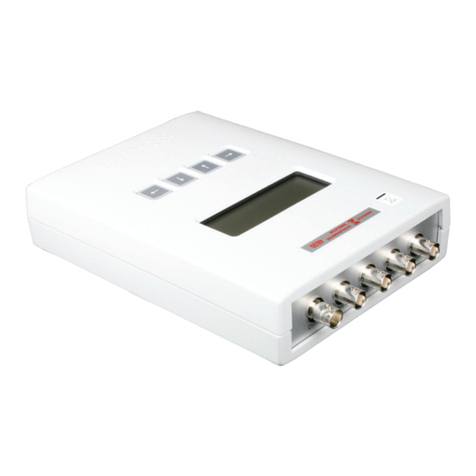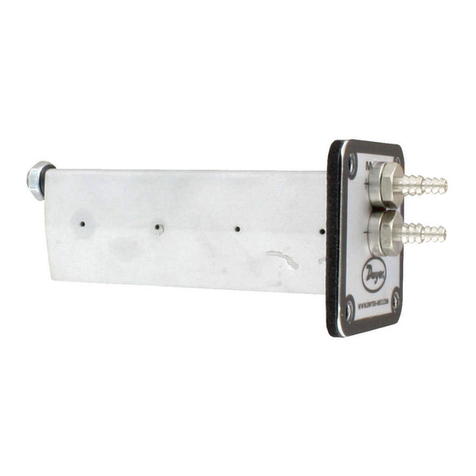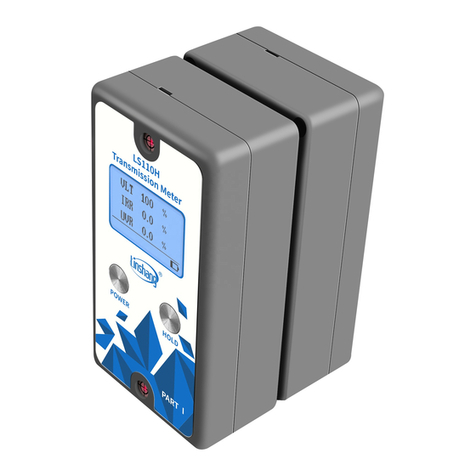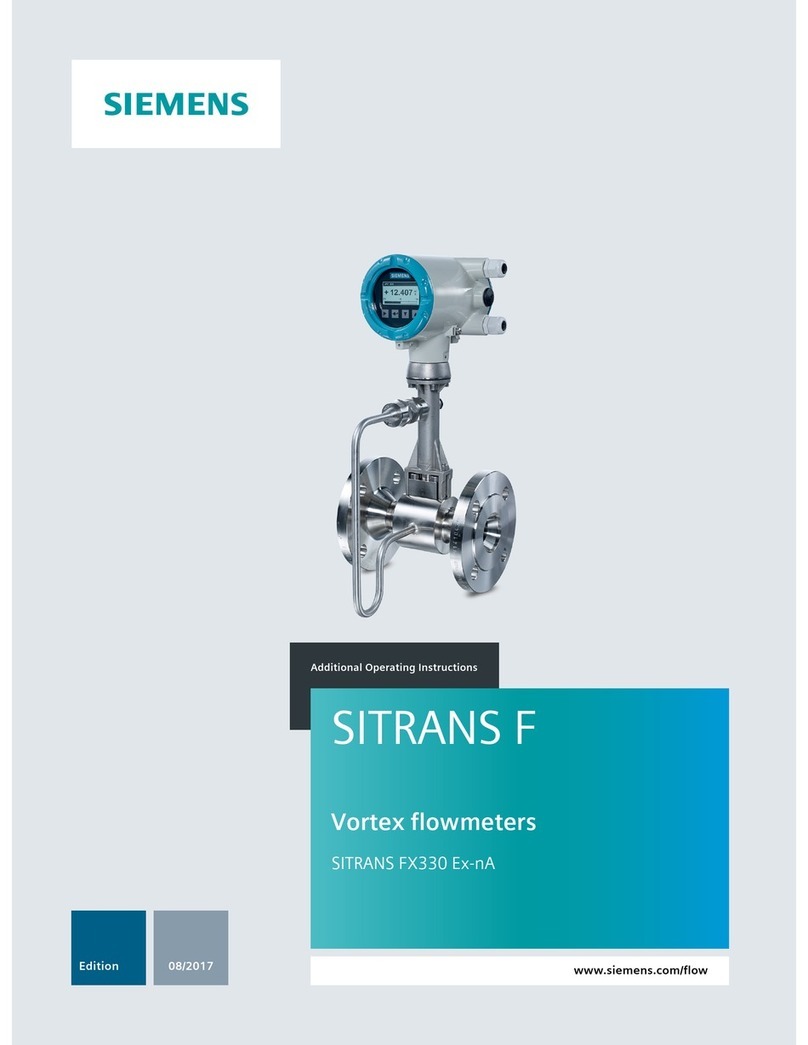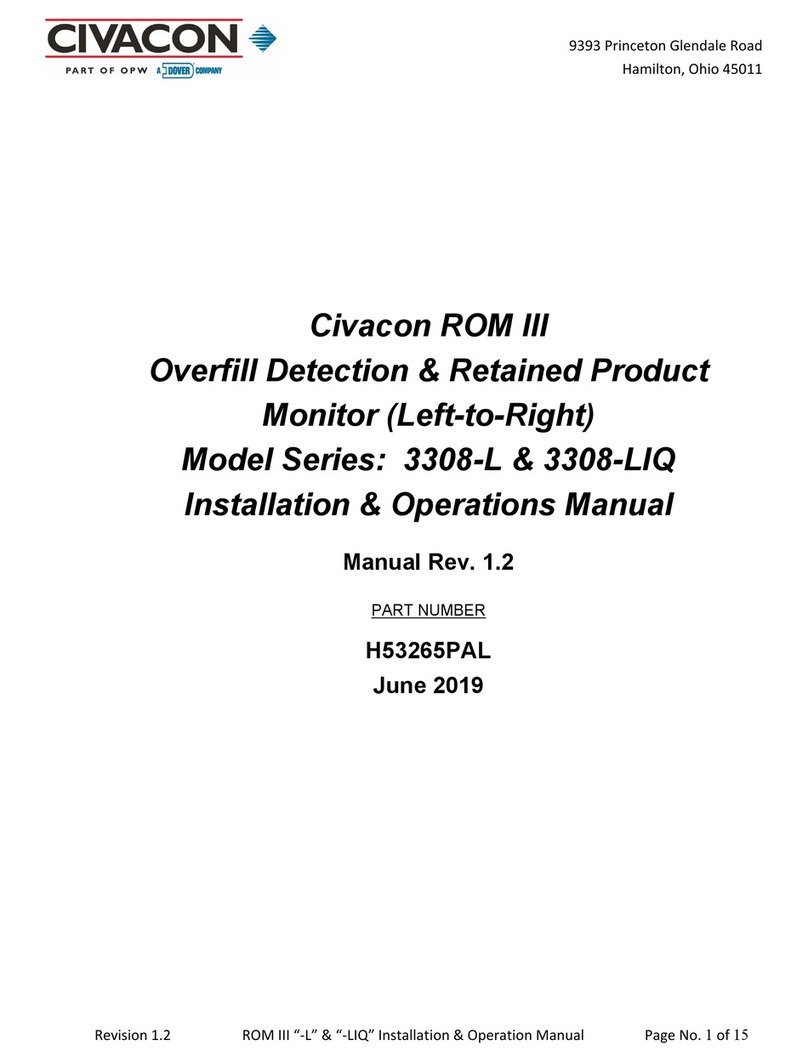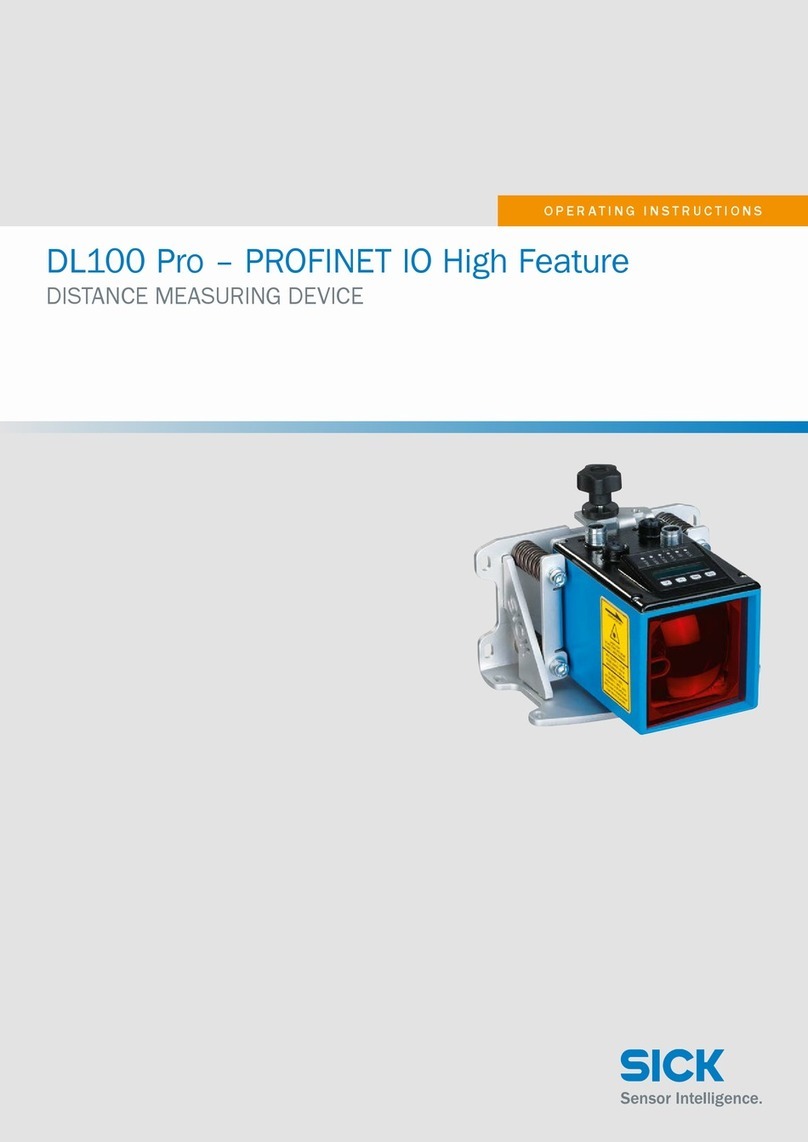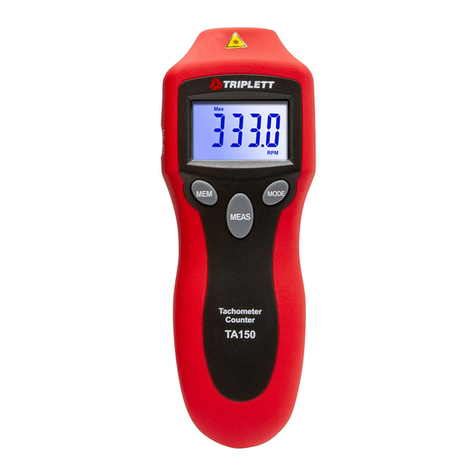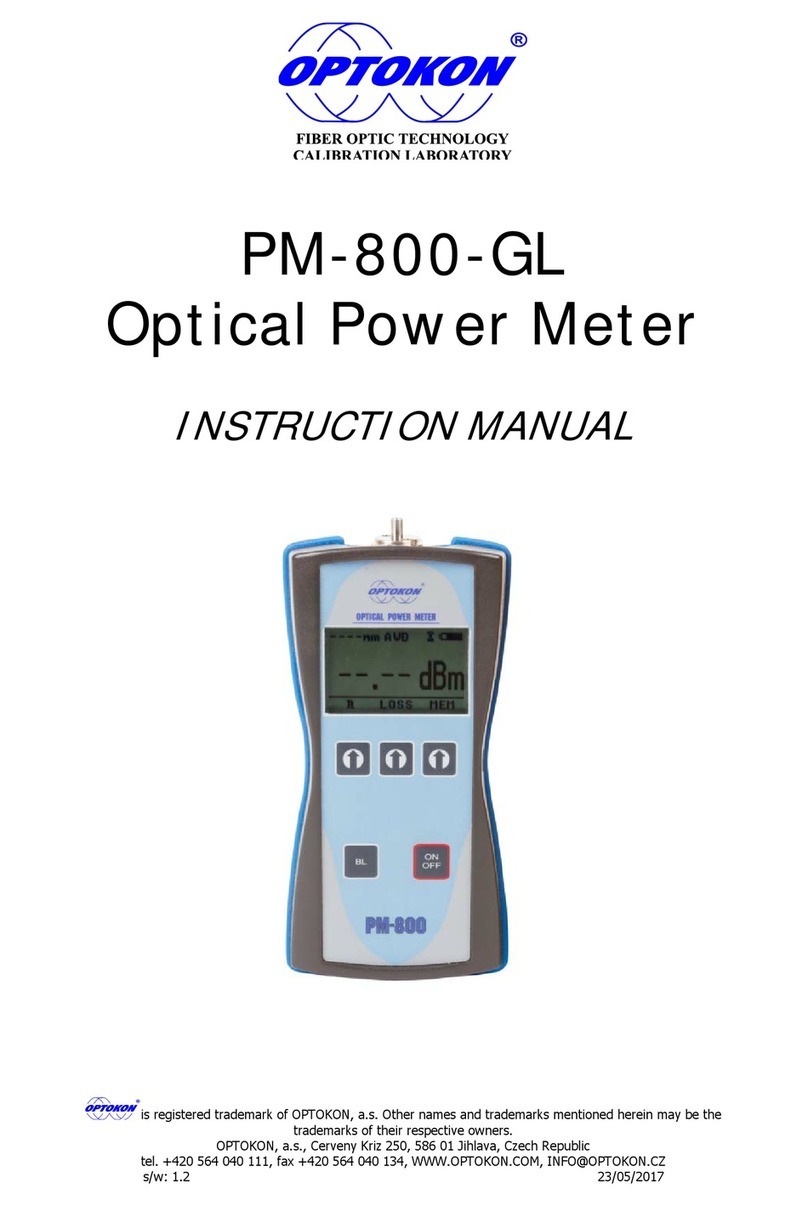Benthowave Instrument BII7120 Series User manual

Page 1of 4
SE=SL-TL+AG-NL
Benthowave Instrument Inc.
Underwater Sound Solutions www.benthowave.com
BII7120 Series Low Noise, Low Power, and Low Frequency Hydrophone: Noise Level Below Sea State Zero
BII's low noise hydrophones are optimized to possess self noise levels below sea-state zero with omnidirectional response in low frequency range and toroidal
response in high frequency range. Its streamlined hemispherical dome minimizes drag force and hydrodynamic noise. The power consumption can be customized
to be 600µA quiescent current at 5VDC for battery powered underwater instrumentation. A spatial array of multiple hydrophones can be set up for directional
measurement system.
The hydrophones can measure underwater sounds and pressure fluctuations down to 0.1Hz infrasonic sounds: Surface Waves (Wave-height Sensor), Turbulences,
seismic, ocean traffics, industrial noises, precipitations, biologics, ...
With these low power hydrophones, battery and system lifetimes are extended, and lighter portable systems with lower-capacity batteries can be achieved. Its
compact small size avoids interferences to acoustic field under test. The preamplifier integrated in the hydrophone can drive cable up to 200m without signal loss.
Available cable terminals include audio connectors (TRS, XLR), BNC, and underwater mateable connectors.
The housing and mounting part are corrosion resistant plastics and/or stainless steels.
Underwater Sound Listening, Recording, and Communication
Typical Applications
Underwater Sounds Recording, Listening, and Communication, Noise Measurement, Marine Bioacoustics, Passive Acoustic Monitoring (PAM System).
Coastal/Offshore Processes, Engineering & Management, Wave-Structure Interaction, Wave-height Sensor, Wave and Tide Recorder/Logger.
Surface Waves, Ocean Turbulences, Hydrodynamics, Marine Geophysics, Battery-Powered Instruments: Sonobuoy, Recorder, Transponder, Acoustic Release...
Questions
How do I set up my professional sound recorders to work with BII Hydrophones?
1. BII hydrophones have their own DC power supply to support Line Input of recorders, and Do NOT use phantom power 48V which may destroy the hydrophones.
2. Maximum Input Level (Line Input) of recorders should be large enough to avoid saturation or clipping during recording.
Equivalent Input Noise of recorders should be low enough for the recorders to be sensitive to weak signal of the interest.
3. Sampling Rate of the recorder should be fast enough to avoid missing high frequency sound of the interest. Generally, the Sampling Rate should be at least two
times greater than the maximum frequency of sound.
4. Calculate the memory size of data storage according to sampling rate, resolution, sampling channels, and recording time, and use suitable recording media.
5. Calculate battery service life according to battery power and consuming current.
6. When the cable is greater than 5m, balanced signal or differential signal is recommended to be in use over the cable.
How do I playback the recorded sounds in water?
System Setup: Recorder (Recorded Sounds) with Line or Phone Output -> Audio Power Amplifiers -> Impedance Matching Device -> Transducers (Projectors).
BII7123FG
Sound Recorder
DAQ + Computer
Oscilloscope
Headphone
Speaker
BII Hydrophone
BII Hydrophone
BII Transducer
BII Transducer
PA + Impedance Matching
Sound Recorder
Sound Transmitter

Page 2of 4
SE=SL-TL+AG-NL
Benthowave Instrument Inc.
Underwater Sound Solutions www.benthowave.com
Specification
Part Number:
BII7126FGDF
BII7126FGSE
BII7126PGSE
Sensitivity FFVS @ 1 kHz:
-196.5 + Preamp Gain, ± 2 dB V/μPa.
FFVS:
Bespoke, Refer to Graph of FFVS vs. Frequency. Free-field Voltage Sensitivity.
Pressure Noise Density:
Refer to Graph of Pressure Noise Density,Referred to Input (RTI), in μPa/√Hz.
Usable Frequency:
In Water: 10 Hz to 260 kHz at ±3 dB V/µPa.
In Air: 10 Hz ~9 kHz at -3 dB V/µPa.
Preamp Gain:
Fixed Gain: 40 dB.
Programmable Gain Preamp: 30, 60 dB.
Gain Selection Voltage:
(Programmable Gain
Preamp)
N/A
CMOS/TTL Compatible
Logic Low 0: Gain Selection Wire to COM or 0 to +0.8 VDC.
Logic High 1: Gain Selection Wire Open or +2.4 VDC to Vs.
Built-in Preamp:
Yes, Low Noise Preamp.
Built-in Filter:
1. Default: -3dB Bandpass Pass Filter: 4 Hz to 260 kHz.
2. Bespoke High Pass or Band Pass filter. Specify when ordering. Note: Minimum high pass filter f-3dB: 4 Hz.
1. Reduce Noise. Both ocean ambient noises and the self-noises of electronic devices decrease when frequency increases. It is
recommended to choose a built-in high pass filter to reject noises in low frequency range. For example, if you are interested in the
signals greater than 200 Hz, you may specify a high pass filter with -3dB cut-off frequency at 100 Hz to improve signal to noise ratio
of the signals of the interest.
2. Avoid Saturation. When there are strong low frequency noises, disturbances, and/or vibrations, resulting from rough surface
waves and/or mechanical movements of the platform, it is recommended to specify a high pass filter to avoid hydrophone
saturation in these low frequency ranges.
-3dB Beam Width:
Omnidirectional and Toroidal. Refer to Graph of Directivity Pattern.
Output Type:
Differential
Single Ended
Single Ended
To reject Electromagnetic Interference (EMI) over long cable, the differential (balanced) output is recommended.
Maximum Output Vomax:
Vomax = (Supply Voltage Vs - 4) Vpp.
(Supply Voltage Vs –3.4) Vpp.
Overload Pressure Level:
197 or [20*log(Vomax/2.828) –Sensitivity], whichever is less. in dB μPa.
Acceleration Sensitivity:
101.5 dB re µPa/(m/s²) at Acoustic Axis; ≤ 101.5 dB µPa/(m/s²) at other directions.
Operating Depth:
Maximum 300 m or 3 MPa pressure and limited by the cable length if the cable has wire leads or a non-waterproof connector.
Mounting Options:
1. Default: Free Hanging (FH)
2. Free-hanging with Male Underwater Connector (FHUWC)
3. Thru-hole Mounting with Single O-ring (THSO)
4. Thru-hole Mounting with Double O-ring (THDO)
5. Bolt Fastening Mounting (Plastics) (BFMP)
6. Bolt Fastening Mounting (Stainless Steel) (BFMSS)
Please refer to online document AcousticSystem.pdf for a complete list of Mounting Options and more details.
Cable:
Four Conductor Shielded Cable (SC)
Six Conductor Shielded Cable (SC)
Cable Length:
1. Default: 10 m.
2. Custom-fit up to 200 m.
Connector:
SE: Single ended Output, DF: Differential Output.
1. Default: Wire Leads (WL)
2. Male BNC (BNC) (Max. Diameter Φ14.3 mm), for SE ONLY.
3. SMA (Plug, Male Pin) (SMA), Voltage Rating: 335 VRMS Continuous. (Max. Diameter Φ9.24 mm), for SE ONLY.
4. SMC (Plug, Female Socket) (SMC), Voltage Rating: 335 VRMS Continuous. (SMC) (Max. Diameter Φ6.4 mm), for SE ONLY.
5. 1/8" (3.5mm) TRS Plug (TRS) (Max. Diameter Φ10.5 mm), for SE or DF.
6. XLR (pin) (XLR) (Max. Diameter Φ20.2 mm), for SE or DF.
7. MIL-5015 Style (pin) (MIL) (Max. Diameter Φ30 mm with 3 contacts), for SE or DF.
8. Underwater Mateable Connector (pin) (UMC) (Max. Diameter Φ21.5 to Φ35 mm), for SE or DF.
9. +9VDC Battery Snap (BS)
Underwater Mateable Connector is for uses underwater. Other connectors and wire leads are for dry uses and are not
waterproofed.
Current (Quiescent):
16 mA
13 mA
6 mA
Supply Voltage Vs:
+7.5 to +32 VDC.
Suggested DC Supply:
+9 VDC Battery, Marine Battery, Automobile Battery, Fixed DC Linear Power Supply, Not Included.
DO NOT use variable power supply whose maximum supply voltage is higher than the rated voltage.
DO NOT use switching mode DC power supply.
Size:
ΦD = Φ21 mm, Length ≥ 90 mm and actual length depends on Mounting Parts.
Weight:
≥ 0.55 kg with 10m cable. Actual weight depends on Mounting Parts, Cable Types and Length.
Operation Temperature:
-10°C to +60°C or 14°F to 140°F.
Storage Temperature:
-20°C to +60°C or -4°F to 140°F.
Sound Measurement in Air: The hydrophones can be used to detect sounds in air. The sensitivity in air is same to the one in water in low frequency range.
Wiring Information of Hydrophones with Fixed-gain Preamps:
Single Ended Output:
Wire Leads
BNC Male/SMA/SMC,
9V Battery Snap
Underwater/XLR
Connector
XLR Plug and
9V Battery Snap
TRS Plug and
9V Battery Snap
+VDC
Red
Female Snap
Pin 3
Battery Female Snap
Battery Female Snap
Common
Black
Male Snap
Pin 1
Battery Male Snap
Battery Male Snap
Signal
White
Center Pin or Contact
Pin 2
XLR Pin 2
TRS Tip
Signal Common
Blue, Green, or Yellow
BNC/SMA/SMC Shield
Pin 4
XLR Pin 1 and Pin 3
TRS Ring and Sleeve
Shielding
Shield
N/A
N/A
XLR Metal Shell
N/A
Differential Output:
Wire Leads
Underwater/XLR Connector
XLR + 9V Battery Snap
TRS + 9V Battery Snap

Page 3of 4
SE=SL-TL+AG-NL
Benthowave Instrument Inc.
Underwater Sound Solutions www.benthowave.com
+VDC
Red
Pin 3
Battery Female Snap
Battery Female Snap
Common
Black
Pin 1
Battery Male Snap
Battery Male Snap
Signal+
White
Pin 2
XLR Pin 2
TRS Tip
Signal-
Blue, Green or Yellow
Pin 4
XLR Pin 3
TRS Ring
Signal Common
N/A
N/A
XLR Pin 1
TRS Sleeve
Shielding
Shield
N/A
XLR Metal Shell
N/A
Wiring Information of Hydrophones with One-bit Programmable Gain Preamps:
Differential Output:
Wire Leads
Underwater/XLR Connector
XLR + 9V Battery Snap
TRS + 9V Battery Snap
+VDC
Red
Pin 3
Battery Female Snap
Battery Female Snap
Common
Black
Pin 1
Battery Male Snap, XLR Pin 1.
Battery Male Snap, TRS Sleeve.
Digital Common
Yellow or Brown
Pin 5
Yellow or Brown
Yellow or Brown
Digital A0 (FFVS Selection)
Blue
Pin 6
Blue
Blue
Output Signal+
White
Pin 2
XLR Pin 2
TRS Tip
Output Signal -
Green
Pin 4
XLR Pin 3
TRS Ring
Shielding
Shield
N/A
XLR Metal Shell
N/A
Single-Ended Output:
Wire Leads
Underwater/XLR Connector
XLR + 9V Battery Snap
TRS + 9V Battery Snap
+VDC
Red
Pin 3
Battery Female Snap
Battery Female Snap
Common
Black
Pin 1
Battery Male Snap, XLR Pin 1.
Battery Male Snap, TRS Sleeve.
Digital Common
Yellow or Brown
Pin 5
Yellow or Brown
Yellow or Brown
Digital A0 (FFVS Selection)
Blue
Pin 6
Blue
Blue
Output Signal
White
Pin 2
XLR Pin 2
TRS Tip
Output Signal Common
Green
Pin 4
XLR Pin 3
TRS Ring
Shielding
Shield
N/A
XLR Metal Shell
N/A
Selecting Sensitivity of One-bit Digitally Programmable
FFVS Selection Wire A0
Hydrophone Sensitivity FFVS at 1kHz.
0 (Logic Low)
-196.5 + 30 dB V/μPa
1 (Logic High)
-196.5 + 60 dB V/μPa
How to Order Hydrophones. The default options are for stock items which are regularly available.
FG: Fixed Gain; PG: Programmable Gain; DF: Differential Output; SE: Single Ended Output. HPF: High Pass Filter; LPF: Low Pass Filter.
Hydrophone
-HPF/LPF
-Mounting
-Cable Length
-Connectors for Signal/Gain/DC Supply
BII7126FGDF
BII7126FGSE
-3dB Filter Frequency,
in Hz, kHz.
Default: 4Hz to 260kHz.
Refer to Options.
Default: Free Hanging.
in meter.
Default: 10m.
Refer to Options.
Default: Wire Leads.
BII7126PGSE
Example of Part Number:
Description
BII7126FGSE-10Hz/150kHz-THSO-0.6m-WL
BII7126FGSE Hydrophone, Bandpass Filter: 10Hz to 150kHz; Thru-hole Mounting with Single O-ring (THSO),
0.6m Shielded Cable, Wire Leads for signal and DC Supply.
BII7126FGDF-Default-FH-100m-XLR/BS
BII7126FGDF Hydrophone, Default Bandpass Filter; Mounting: Free Hanging, 100m Shielded Cable, 3-pin XLR
Plug for Signals, +9V Battery Snap for DC Supply.
BII7126PGSE-Default-FH-30m-BNC/WL/BS
BII7126PGSE Hydrophone, Default Bandpass Filter; Mounting: Free Hanging, 30m shielded Cable, BNC Male for
Signal, Wire Leads for Gain Selection, +9V Battery Snap for DC Supply.
BII7126PGDF-100Hz-FH-100m-XLR
BII7126PGDF Hydrophone, High Pass Filter: 100Hz; Mounting: Free Hanging, 100m shielded Cable, 6-pin XLR
Plug for Signal, Gain Selection, and DC supply.
Question:
What if the mating connector of my DAQ module or recording device is NOT available from BII?
1. Buyer may order BII products with wire leads, and buyer assembles the mating connector to the cable end.
2. A connector adaptor might be assembled by BII by customization, and BII ships the adaptor to buyer as accessory of the device. Please contact BII for
customizations.
3. Many adaptors for standard connectors are available in worldwide electronic suppliers such as BNC to SMA, BNC to SMC, XLR to TRS, etc. Check out your local
suppliers.
Can the hydrophone with differential outputs be wired to single-ended inputs of a DAQ device (Data Acquisition Equipment) such as an Oscilloscope?
Yes, output+ and Common of a BII hydrophone can be used a single-ended signal, or Output- and Common of the hydrophone can be used a single-ended signal.
But, neither output+ nor output –of the hydrophone can be wired to common which is going to destroy the hydrophone by short circuit.
How do I use Gain Selection wires in field?
1. Manual Gain Selection.
When a Gain Selection wire is floating or open, its digital logic is High or “1”.
When a Gain Selection wire is short to Digital Common, its digital logic is Low or “0”.
Sensitivity of a Hydrophone is fixed when its Gain Selection wires are fixed to Digital Common or open (floating) during operation.
2. Gain Selection with Digital Outputs. Digital Outputs of a DAQ (data acquisition device) select gains with TTL/CMOS logic levels.

Page 4of 4
SE=SL-TL+AG-NL
Benthowave Instrument Inc.
Underwater Sound Solutions www.benthowave.com
Physical Size (Dimensional Unit: mm): The overall length varies with the length of the built-in preamplifier and mounting parts.
a. Size information of BII7126 Free Hanging.
Free-field Voltage Sensitivity: Noise Density (Referred to Input):
Directivity Pattern:
BII7126FG
BII7126PG
BII7126FG
BII7126PG
Cable
Φ21
70 to 80
27
Φ9.4
Mounting Part
7, Acoustic Center
This manual suits for next models
7
Popular Measuring Instrument manuals by other brands
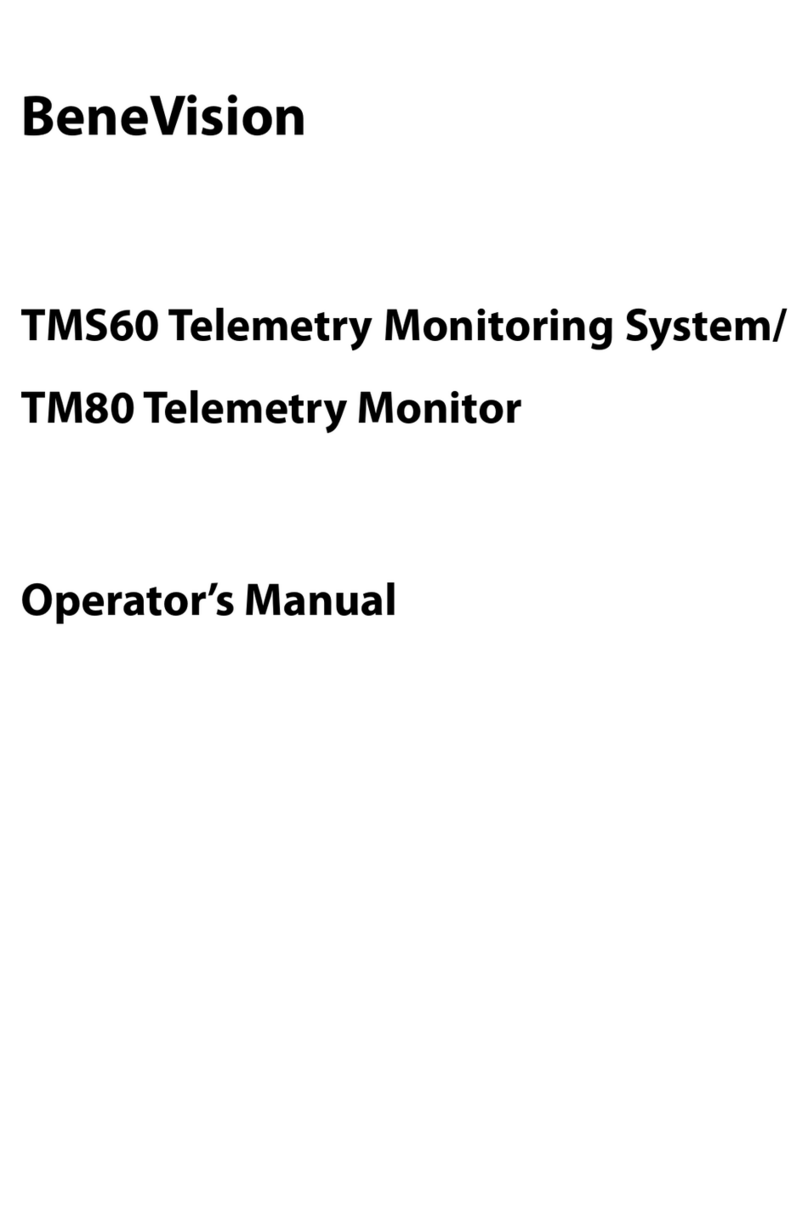
BeneVision
BeneVision TMS60 Operator's manual
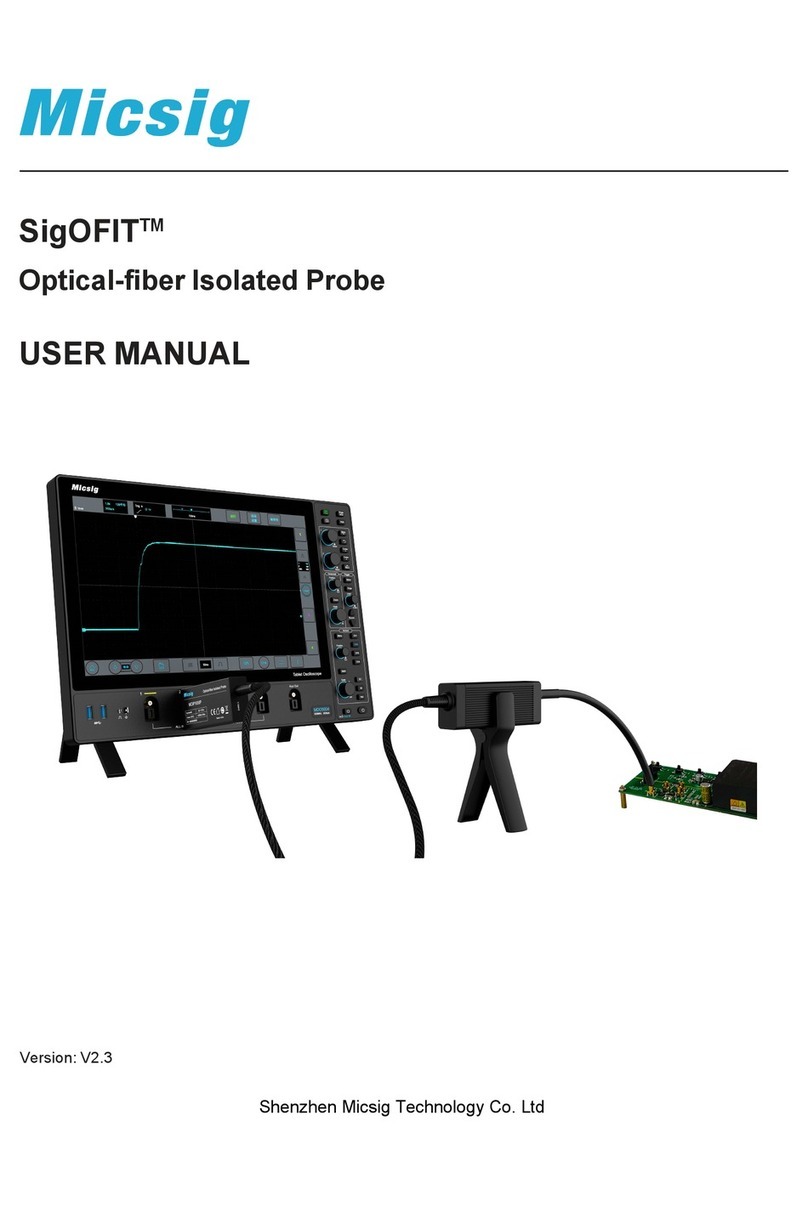
Micsig
Micsig SigOFIT MOIP01P SigOFIT MOIP01P user manual

PCE Health and Fitness
PCE Health and Fitness ND10 user manual
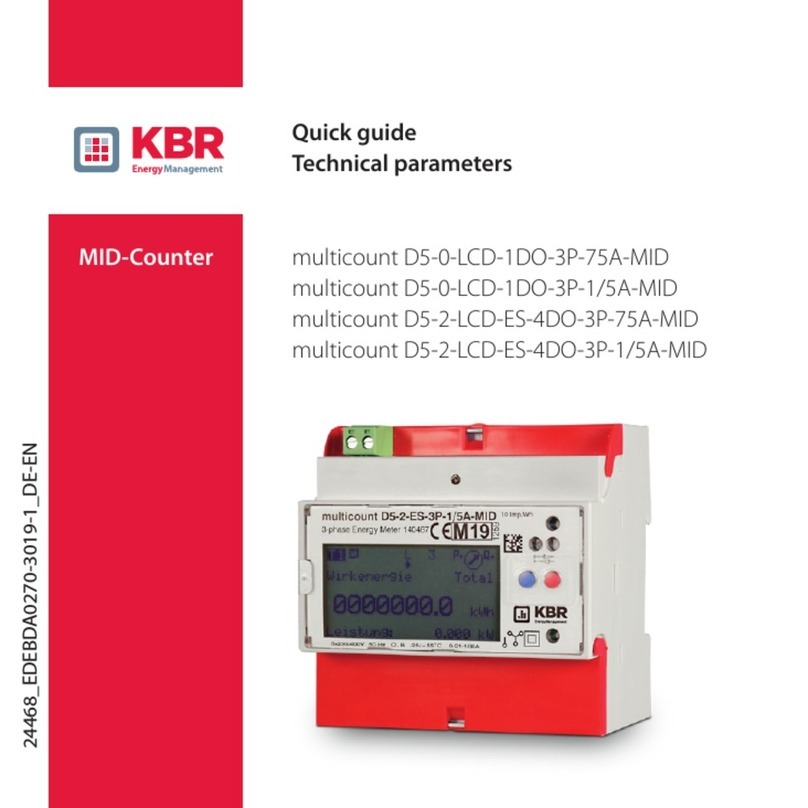
KBR
KBR multicount D5-0-LCD-1DO-3P-75A-MID quick guide
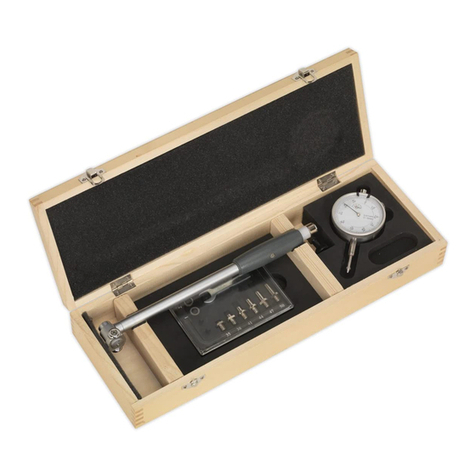
Sealey
Sealey DBG509 instructions

Lafayette Instrument
Lafayette Instrument J00111 user manual
